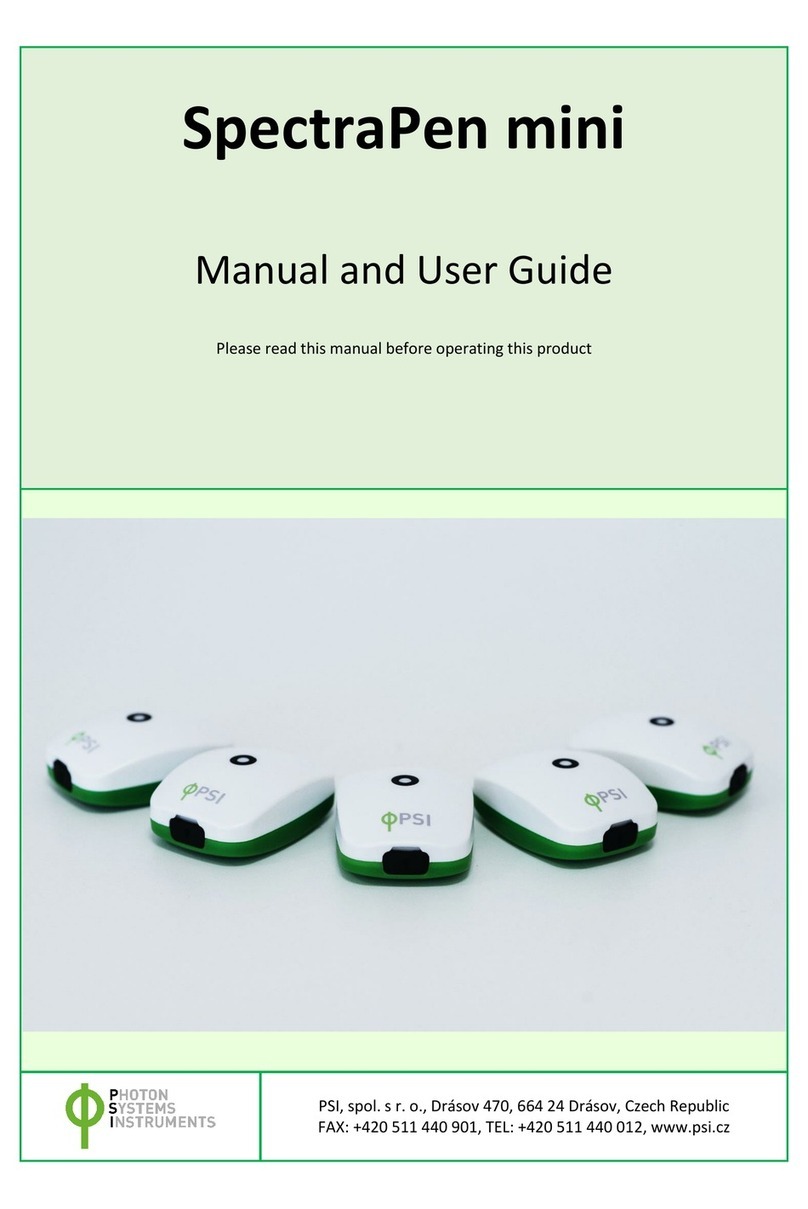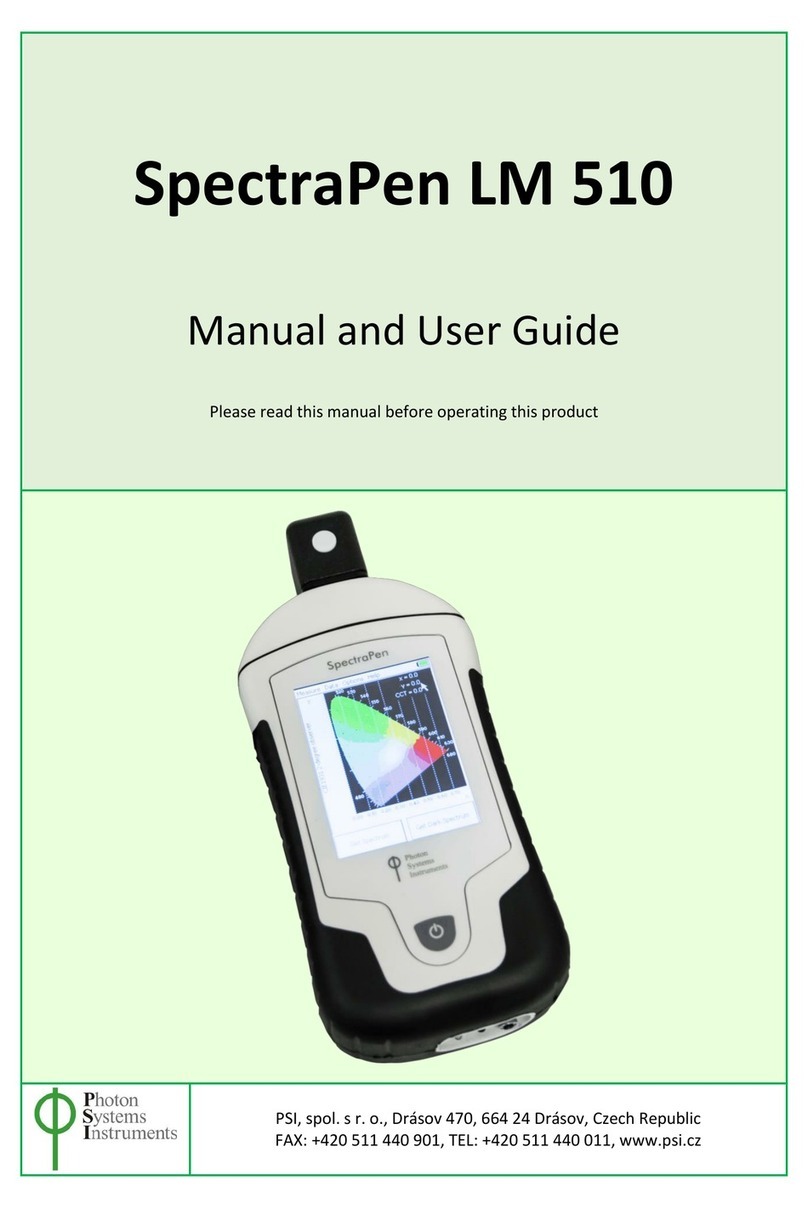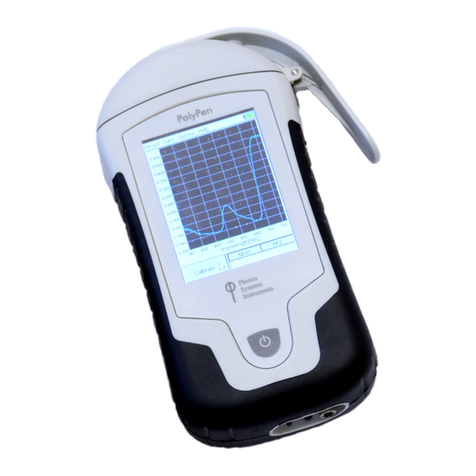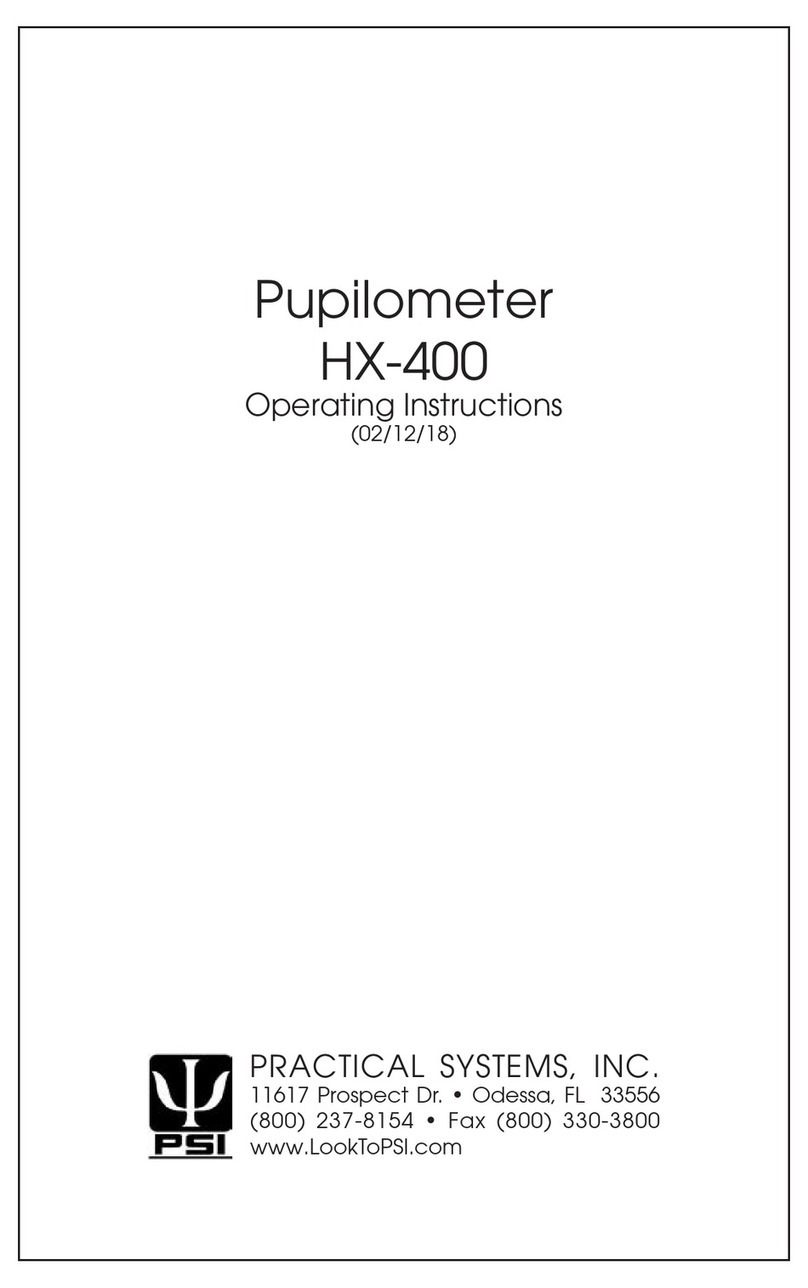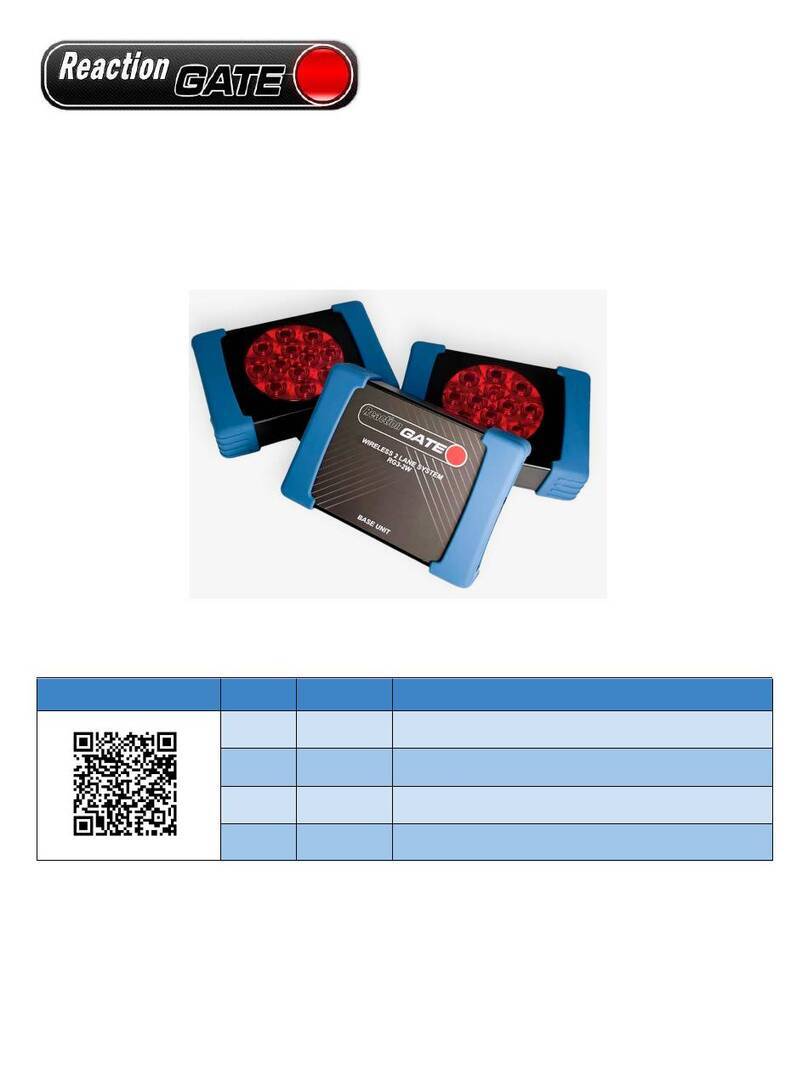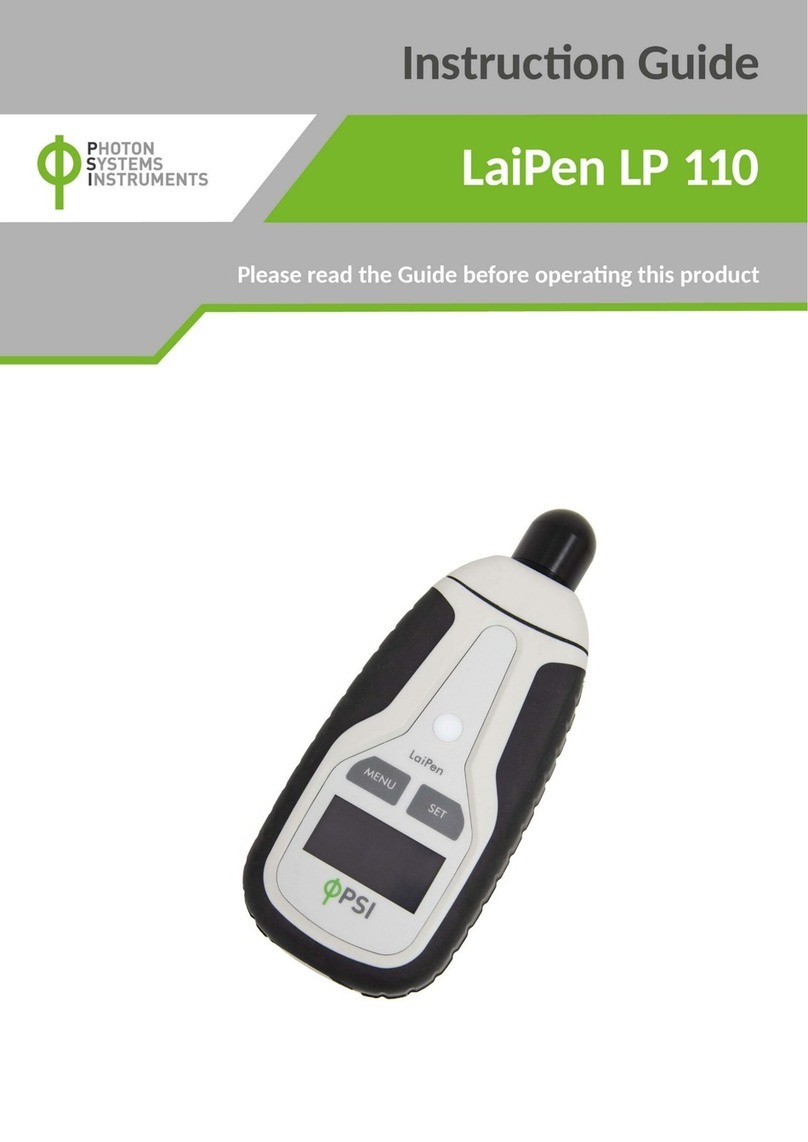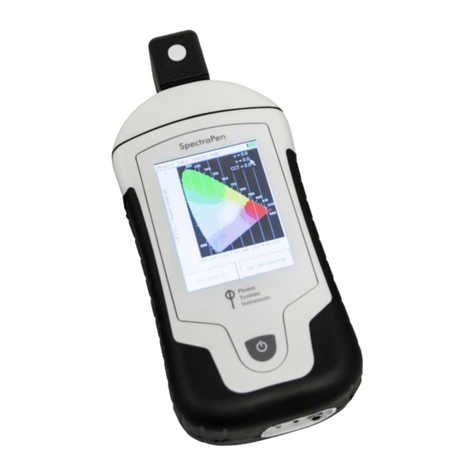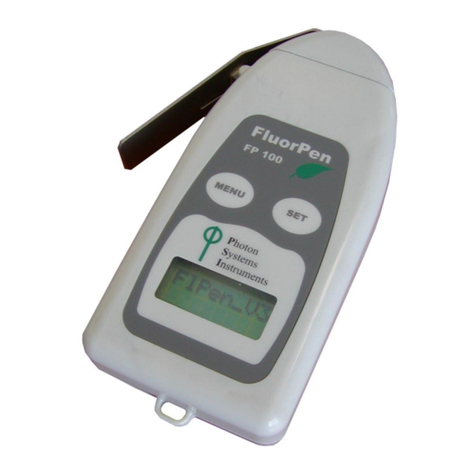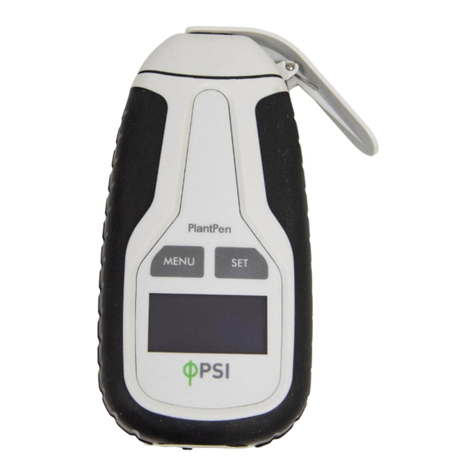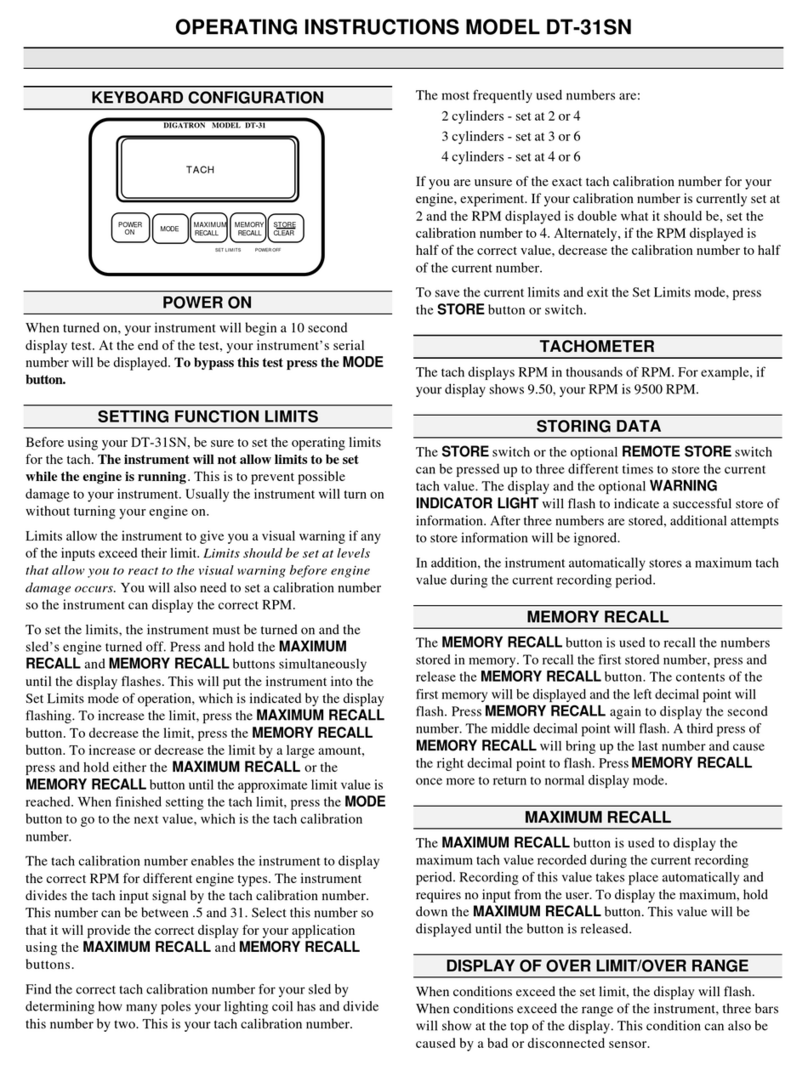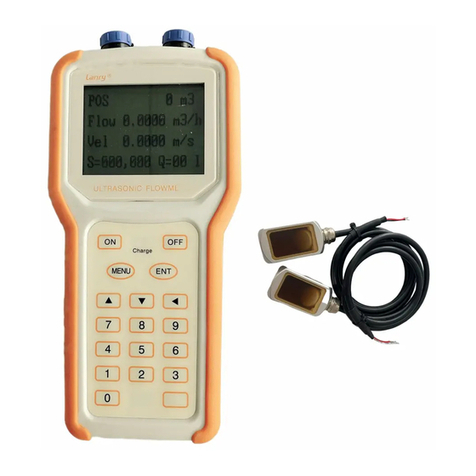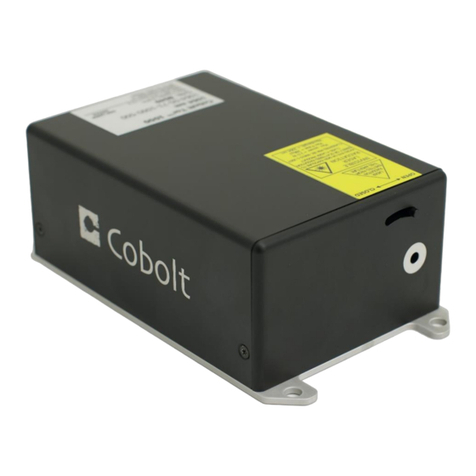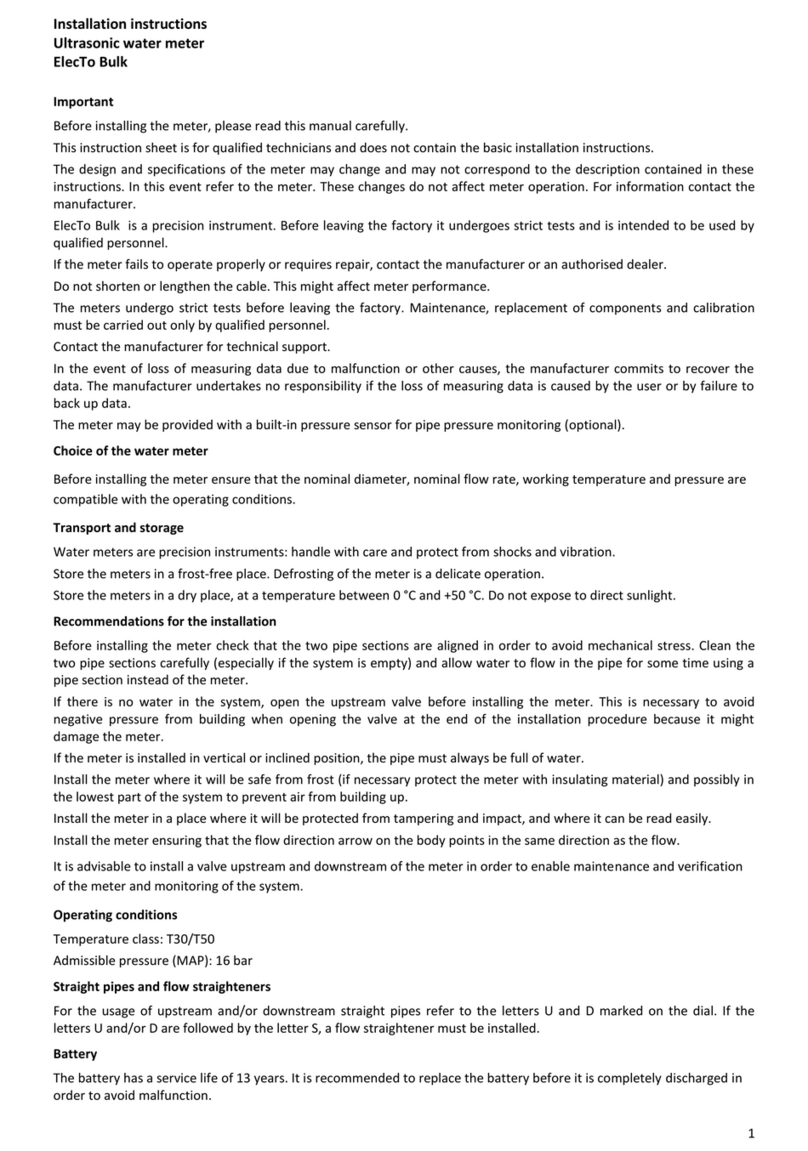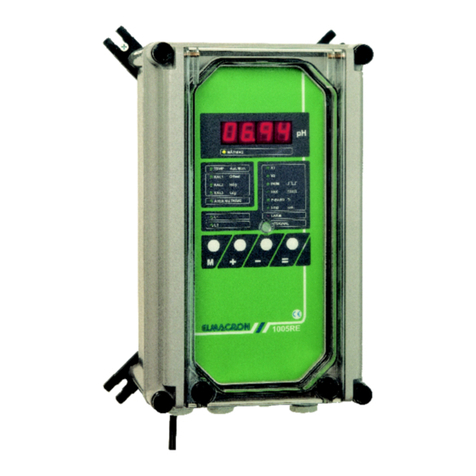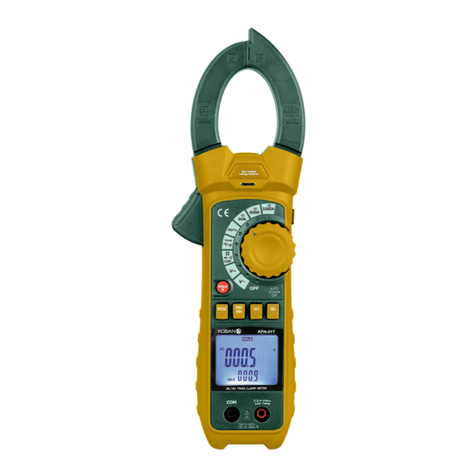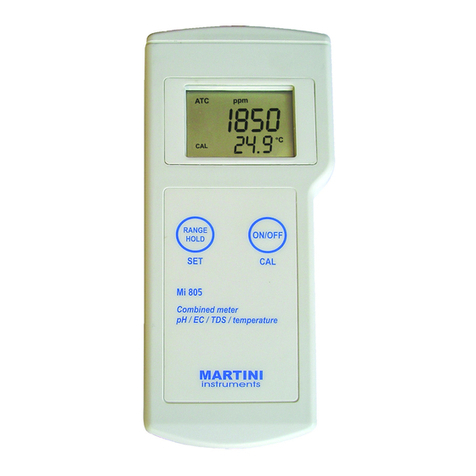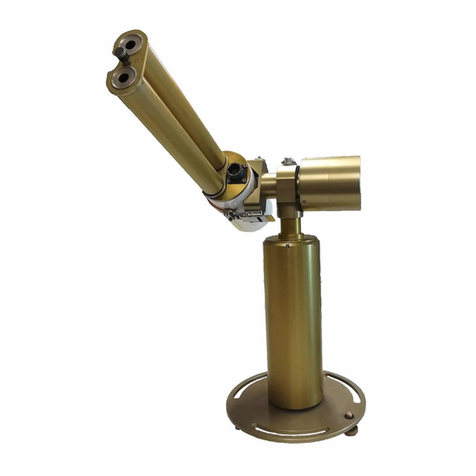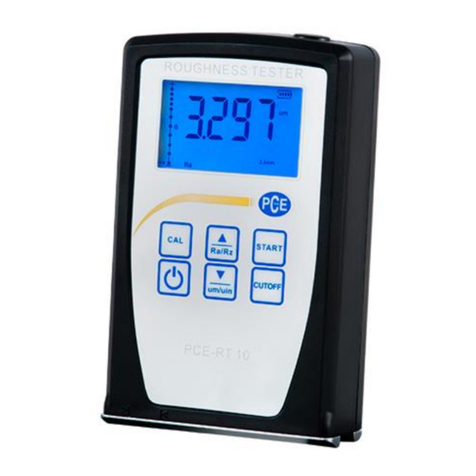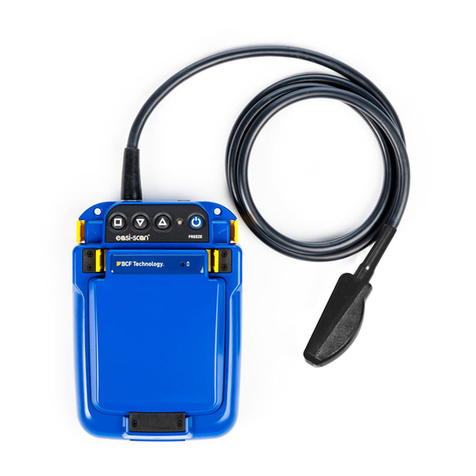PSI FluorPen FP 110 Guide

FluorPen FP 110
PAR-FluorPen FP 110
Monitoring Pen MP 100
Manual and User Guide
Please read this manual before operating this product
PSI, spol. s r. o., Drásov 470, 664 24 Drásov, Czech Republic
FAX: +420 511 440 901, TEL: +420 511 440 011, www.psi.cz

© PSI (Photon Systems Instruments), spol. s r. o.
2
© PSI (Photon Systems Instruments), spol. s r. o. (hereinafter PSI), 2018
This document and its parts can be copied or provided to a third party only with the express permission of PSI.
The contents of this manual have been verified to correspond to the specifications of the device. However, deviations
cannot be ruled out. Therefore, a complete correspondence between the manual and the real device canno t be
guaranteed. The information in this manual is regularly checked, and corrections may be made in subsequent versions.
The visualizations shown in this manual are only illustrative.
This manual is an integral part of the purchase and delivery of equipment and its accessories and both Parties must abide
by it.

© PSI (Photon Systems Instruments), spol. s r. o.
3

© PSI (Photon Systems Instruments), spol. s r. o.
4
TABLE OF CONTENTS
1Information Before Using FluorPen Device..................................................................................................................... 6
2Technical Specification.................................................................................................................................................... 7
3General Information ....................................................................................................................................................... 9
3.1 Device description ............................................................................................................................................... 12
4List of equipment .......................................................................................................................................................... 13
5Care and Maintenance.................................................................................................................................................. 14
6Principle of Measurement ............................................................................................................................................ 15
7How to get started ........................................................................................................................................................ 17
7.1 Pulses description and setting............................................................................................................................. 17
7.2 Measurement ...................................................................................................................................................... 19
7.3 Protocols explanation.......................................................................................................................................... 20
7.3.1 OJIP Protocol ................................................................................................................................................... 20
7.3.2 Non-Photochemical Quenching (NPQ) Protocol ............................................................................................. 21
7.3.3 Light Curve (LC) Protocol................................................................................................................................. 24
7.4 Multiple Measurement ....................................................................................................................................... 27
8Control menu tree......................................................................................................................................................... 28
9USB Connection ............................................................................................................................................................ 36
10 Bluetooth Connection.............................................................................................................................................. 37
10.1 Bluetooth Pairing................................................................................................................................................. 37
11 FluorPen Software ................................................................................................................................................... 41
11.1 Software Installation ........................................................................................................................................... 41
11.2 Menu and Icon Explanation................................................................................................................................. 42
11.2.1 Main Menu ................................................................................................................................................. 42
11.2.2 Menu Settings............................................................................................................................................. 43
11.2.3 Menu Online Control .................................................................................................................................. 44
11.3 Data Transfer and Visualization........................................................................................................................... 46
11.4 Firmware Update................................................................................................................................................. 48
12 GPS Module ............................................................................................................................................................. 50
12.1 GPS / FluorPen Operation ................................................................................................................................... 50

© PSI (Photon Systems Instruments), spol. s r. o.
5
12.2 Data Download .................................................................................................................................................... 51
13 Warranty Terms and Conditions.............................................................................................................................. 52
14 Troubleshooting and Customer Support ................................................................................................................. 53
15 Appendix .................................................................................................................................................................. 54
15.1 Battery Pack for Monitoring Pen ......................................................................................................................... 54
15.1.1 Standard Battery Pack ................................................................................................................................ 54
15.1.2 Extended Temperature Range Battery Pack ............................................................................................... 55

© PSI (Photon Systems Instruments), spol. s r. o.
6
1INFORMATION BEFORE USING FLUORPEN DEVICE
Read this manual carefully before operating the device. If you are not sure about anything in the manual, contact the
manufacturer for clarification.
By accepting the device, the customer agrees to follow the instructions in this guide.
Always follow corresponding manuals while working with the FluorPen device or doing the maintenance.
It is forbidden to interfere with the hardware or software of the FluorPen device in any way without previous agreement
with the manufacturer.
The following table presents basic highlight symbols used in this manual.
Symbol
Description
Important information, read carefully.
Complementary and additional information.
Tab. 1 Used symbols.

© PSI (Photon Systems Instruments), spol. s r. o.
7
2TECHNICAL SPECIFICATION
Measured / Calculated Parameters:
F0, Ft, Fm, Fm‘, QY, NPQ 1, NPQ 2, NPQ 3, OJIP, LC 1, LC 2, LC 3, PAR (measured as PPFD)*
Cosine correction of PAR sensor*:
Cosine corrected up to 80º angle of incidence
Linearity*:
Maximum deviation of 1 % up to per 10,000 µmol.m-2.s-1)
Saturating Pulse Illumination:
Adjustable from 10 to 100 % (up to 3,000 µmol.m-2.s-1)
Actinic Illumination:
Adjustable from 10 to 1,000 µmol.m-2.s-1
Measuring Illumination:
Adjustable from 10 to 100 % (up to 0.09 µmol.m-2.s-1 per pulse)
LED Emitter specification:
Blue (455 nm)
Detector Wavelength Range:
PIN photodiode with 667 to 750 nm bandpass filters
Communication:
USB and Bluetooth
FluorPen Software:
Windows 7 or higher compatible**
Memory Capacity:
Up to 16 Mb
Internal Data Logging:
Up to 149,000 data points
Display:
Graphical display
Keypad:
Sealed, 2-key tactile response
Keypad Escape Time:
Turns off after 8 minutes of no use
Power Supply:
Li-Ion rechargeable battery
Battery Life:
48 hours typical with full operation
Low Battery Detection:
Low battery indication displayed
Size:
134 mm x 65 mm x 33 mm
Weight:
188 g
Sample Holder:
Mechanical leaf clip (non-destructive for plants, effective for sample pre-darkening)
Operating Conditions:
Temperature: 0 to +55 ºC, 32 to 130 ºF; Relative humidity: 0 to 95 % (non-condensing)
Storage Conditions:
Temperature: -10 to +60 ºC, 14 to 140 ºF; Relative humidity: 0 to 95 % (non-condensing)
Warranty:
1 year parts and labor (see the last page of this Operation Manual for precise warranty conditions)

© PSI (Photon Systems Instruments), spol. s r. o.
8
* Only in PAR-FluorPen FP 110.
** Windows is a registered trademark of Microsoft Corporation.

© PSI (Photon Systems Instruments), spol. s r. o.
9
3GENERAL INFORMATION
FluorPen FP 110 is a portable, battery-powered fluorometer that enables quick and precise measurement of chlorophyll
fluorescence parameters in the laboratory, greenhouse, or in the field owing to an inbuilt GPS module. It can be
effectively used for studying photosynthetic activity, stress detection, herbicide testing, or mutant screening. Affordable
price and straight-forward two-button operation makes the FluorPen a perfect tool for teaching photosynthesis. Because
of its rapid measurement capability and large internal memory, the FluorPen is also an invaluable tool for large plant-
screening programs.
PAR-FluorPen FP 110 includes all features of the FluorPen FP 110, i.e., it measures chlorophyll fluorescence parameters
Ft, QY, NPQ, OJIP, and LC (QY). Besides that, the PAR-FluorPen incorporates an integrated Light Meter for direct digital
readouts of Photosynthetically Active Radiation (PAR) in the range from 400 to 700 nm, the span in which plants use
energy during photosynthesis. PAR is measured as Photosynthetic Photon Flux Density (PPFD), which is indicated by units
of quanta (photons) per unit time per unit surface area. The sensor has a uniform response to photons withing the 400-
700 nm waveband. Instant readouts are provided as average values of 20 measurements. Recalibration of the PAR sensor
in the PAR-FluorPen device –recommended after 2 years of use.
Monitoring Pen MP 100 is a lightweight, portable and durable fluorometer. It is an extended version of the popular
FluorPen. Due to its robust and weatherproof construction the Monitoring Pen is designed for long-term, unattended
monitoring of chlorophyll fluorescence parameters in lab or field experiments, even in rough environmental conditions.
It is battery operated (internal or external battery) and it may optionally use a solar panel as a power supply.
Measured data are sequentially stored in the internal FluorPen, PAR-FluorPen or Monitoring Pen memory. New design of
FluorPen series devices allows use both types of communication with a PC - USB and Bluetooth. Comprehensive FluorPen
1.1 software provides data transfer routines and many additional features for data presentation in tables and graphs.
FluorPen versions:
FluorPen FP 110/S
Equipped with a standard leaf-clip.
FluorPen FP 110/D
Adapted for use with detachable leaf-clips; leaf clips sold separately.
FluorPen FP 110/P (Fig. 1c)
Intended for autonomous use in indoor conditions (previously Monitoring Pen-S). It features a plastic case, measuring
probe and thread for tripod attachment.
FluorPen FP 110/X
The “X“ version is mounted with custom-made leaf-clip.
PAR-FluorPen FP 110/S (Fig. 1a)
Measures in addition to standard fluorescence protocols also Photosynthetically Active Radiation (PAR) in the range from
400 to 700 nm. Equipped with a standard leaf-clip.
PAR-FluorPen FP 110/D (Fig. 1b)
Measures in addition to standard fluorescence protocols also Photosynthetically Active Radiation (PAR) in the range from
400 to 700 nm. Adapted for use with detachable leaf-clips; leaf clips sold separately.
Unless stated otherwise in this manual information regarding the FluorPen FP 110 are relevant also
for the Monitoring Pen MP 100.

© PSI (Photon Systems Instruments), spol. s r. o.
10
PAR-FluorPen FP 110/X
Measures in addition to standard fluorescence protocols also Photosynthetically Active Radiation (PAR) in the range from
400 to 700 nm. The “X“ version is mounted with custom-made leaf-clip.
Fig. 1a) PAR-FluorPen FP 110/S. b) PAR-FluorPen FP 110/D. c) FluorPen FP 110/P.
Monitoring Pen versions:
Monitoring Pen MP 100-E (Fig. 2a)
Durable, battery-powered fluorometer intended for autonomous use in field conditions. It features
a waterproof metal case, measuring probe, thread for tripod attachment, external pack with batteries and the FluorPen
1.1 software for data collection and processing.
Monitoring Pen MP 100-A (Fig. 2b)
Submersible, battery-powered fluorometer intended for underwater measuring of fluorescence parameters (also
autonomous). It features a waterproof case, measuring probe, and the FluorPen 1.1 software for data collection and
processing. External battery pack with batteries is sold separately. Generally, version A is intended for maximum water
depth up to 2 meters. The device is equipped with two buttons that allow direct control of the device (even under
water). Version B can be used in deeper water (maximum 10 m). There are no buttons on the device. This version is
intended for automatic measuring; the device control is enabled via commands preprogrammed in a PC (placed on
shore). The device is usually fixed in static position under water.

© PSI (Photon Systems Instruments), spol. s r. o.
11
Fig. 2a) Monitoring Pen MP 100-E. b) Monitoring Pen MP 100-A.

© PSI (Photon Systems Instruments), spol. s r. o.
12
3. 1 D EV IC E DE SCRIP TIO N
Fig. 3 Device description.

© PSI (Photon Systems Instruments), spol. s r. o.
13
4LIST OF EQUIPMENT
Carefully unpack the carton. You should have received the following items:
•FluorPen/Monitoring Pen
•Carrying Case
•Textile Strap for Comfortable Wearing
•FluorPen Operating Manual (on a USB flash disc)
•FluorPen software and driver (on a USB flash disc)
•USB cable
•Self-Adhesive Rubber Pads for Optics Protection (FP 110/S only)
•Detachable Leaf-clips (FP 110/D only)
Other Accessories or Optional Features (according to your specific order)
For USB connection you need to have the USB driver installed in your PC. You find the driver on the
installation disk (USB driver folder). For more information go to
If any item is missing, please, contact PSI. Also check the carton for any visible external damage. If
you find any damage, notify the carrier and PSI immediately. The carton and all packing materials
should be retained for inspection by the carrier or insurer.
For customer support, please write to: support@psi.cz

© PSI (Photon Systems Instruments), spol. s r. o.
14
5CARE AND MAINTENANCE
•Never submerge the device in water! (except Monitoring Pen MP 100-A)
•The device should not come in contact with any organic solvents, strong acids or bases.
•Keep the optical part clean and dry. If cleaning is needed, use soft, non-abrasive tissue.
•Battery life is approximately 48 hours when the FluorPen is operated continuously.

© PSI (Photon Systems Instruments), spol. s r. o.
15
6PRINCIPLE OF MEASUREMENT
FluorPen is a fluorometer which can measure different fluorescence parameters of plants. It is equipped with a blue LED
emitter (455 nm), optically filtered and precisely focused to deliver light intensities of up to 3,000 µmol.m-2.s-1 to
measured plant tissue (Fig. 4).
Fig. 4 Schema of FluorPen FP 110/S.
To use measurements of chlorophyll fluorescence to analyse photosynthesis, researchers must distinguish between
photochemical quenching and non-photochemical quenching (heat dissipation). This is achieved by stopping
photochemistry, which allows researchers to measure fluorescence in the presence of non-photochemical quenching
alone. To reduce photochemical quenching to negligible levels, a high intensity, short flash of light is applied to the leaf.
This transiently closes all PSII reaction centers, which prevents energy of PSII being passed to downstream electron
carriers. Non-photochemical quenching will not be affected if the flash is short. During the flash, the fluorescence
reaches the level reached in the absence of any photochemical quenching, known as maximum fluorescence Fm. The
efficiency of photochemical quenching (which is a proxy of the efficiency of PSII) can be estimated by comparing Fmto
the steady yield of fluorescence in the light Ftand the yield of fluorescence in the absence of photosynthetic light F0.
The efficiency of non-photochemical quenching is altered by various internal and external factors. Alterations in heat
dissipation mean changes in Fm. Heat dissipation cannot be totally stopped, so the yield of chlorophyll fluorescence in the
absence of non-photochemical quenching cannot be measured. See picture below (Fig. 5).

© PSI (Photon Systems Instruments), spol. s r. o.
16
Fig. 5 Chlorophyll fluorescence.
FluorPen measures:
Ft- Instantaneous Chlorophyll Fluorescence
Ftis equivalent to F0if the sample is dark-adapted.
QY - Quantum Yield
QY is a measure of the Photosystem II efficiency. QY is equivalent to Fv/Fmin dark-adapted samples and to Fv ' /Fm ' in
light-adapted samples.
OJIP - Chlorophyll Fluorescence Induction Kinetics
The OJIP curves enable observing major changes that occur during exposure of a sample to high irradiance (see more
in Chapter 7.3.1).
NPQ - Non-Photochemical Quenching
The NPQ protocol is the most typically used measuring approach to quantify photochemical and non-photochemical
quenching. The measurement should be performed with a dark-adapted sample. More in chapter (see more in
Chapter 7.3.2)
LC - Light Curve
Photosystem II Quantum Yield estimated from fluorescence that is measured sequentially in several different light
levels (see more in Chapter 7.3.3).
PAR* - Photosynthetically Active Radiation
Photosyntetically Active Radiation measured as Photosythetic Photon Flux Density (PPFD).
* Only in PAR-FluorPen FP 110.

© PSI (Photon Systems Instruments), spol. s r. o.
17
7HOW TO GET STARTED
For more detailed information on particular steps of FluorPen operation please refer to chapter 8.
The device can work on Li-Ion battery or is charged via USB cable from PC or grid. Monitoring Pen can be charged also
from battery pack (see more in chapter 15.1)
The FluorPen is controlled using two buttons:
•Use the MENU key to scroll through sequential menu options on the digital display.
•Use the SET key to select a menu option based on cursor (>) position.
7. 1 PUL SES D ES CRI PTI ON A N D SETTI NG
Flash pulse
This function serves for setting of measuring pulses intensity. The measuring pulses are weak pulses, which are able to
induce the minimal chlorophyll fluorescence (F0or Ft). It takes only 30 µs and the maximum intensity is
3,000 µmol.m-2.s-1. It means 30 µs * 3,000 µmol.m-2.s-1 = 0,09 µmol.m-2 per pulse is the maximal intensity of the flash
pulse.
Super pulse
This function serves for setting intensity of the saturating pulse. Saturating pulse induces maximum chlorophyll
fluorescence (Fm). 100 % of intensity equals approximately 3,000 µmol.m-2.s-1.
Actinic pulse
This function serves for setting intensity of measuring pulses. Actinic light is basically the ambient light in which the algae
are growing. 100 % of intensity equals approximately 1,000 µmol.m-2.s-1.
Pulses used in predefined protocols:
Measurements based on fluorescence
Used pulses
Ft
Flash pulse
QY
Flash pulse, Super pulse
OJIP
Super pulse
NPQ protocols
Flash pulse, Super pulse, Actinic pulse
Light Curves
Flash pulse, Super pulse (Actinic pulse is preset)
Default setting of light intensities:
Flash pulse 30 % = Measuring flash pulse
Super pulse 80 % = Saturating pulse
Actinic pulse 300 µmol.m-2.s-1 (30 %) = Actinic light
Please note that those paramets are recommended by manufacturer and you can change them
according to your needs.

© PSI (Photon Systems Instruments), spol. s r. o.
18
Setting of optimal intensities of pulses:
Flash pulse setting
The optimum value of Flash pulse you can identify with QY measurement. Before QY measurement is recommended to
set the intensity of Super pulse on 80 %.
Please note that QY measurement should be performed with dark adapted sample. New sample is needed for every
measurement (measured point of the leaf can be inhibited after measurement).
F0 is increasing linearly with growing intensity of Flash pulse. Increasing Flash pulse is not affecting background value.
The Flash pulse setting recommended by manufacturer is 30 %. You can increase the intensity of Flash pulse in case of
sample with very low chlorophyll density. Please note that high intensities of Flash pulse can cause undesirable “actinic
effect”. In this case the Flash pulse initiates the photochemistry. The Flash pulse affects F0and the QY value will be lower.
The Flash pulse intensity at which the highest value of QY is reached is optimal for your sample (Fig. 6).
Fig. 6 QY measurement performed with different intensities of Flash pulse. Optimal setting is highlighted in red rectangle.
Super pulse setting
Best way to recognized the optimal intensity of Super pulse is perform OJIP measurement.
Please note that OJIP measurement should be performed with dark adapted sample. New sample is needed for every
measurement (measured point of the leaf can be inhibited after measurement).
The Super pulse setting recommended by manufacturer is 80 %.
Perform the OJIP measurement with different intensities of Super pulse. When the Fv/Fmvalue stops growing during the
OJIP measurement with various Super pulse intensities, the Super pulse intensity is optimal for your samples (Fig. 7).

© PSI (Photon Systems Instruments), spol. s r. o.
19
Fig. 7 OJIP measurement performed with different intensities of Super pulse.
Actinic pulse setting
Intensity of Actinic pulse should correspond with cultivation light intensity or should be set according to application.
If you see Overflow on display during measurement please lower the intensity of used pulses.
In case of Low value on display during measurement please heighten the intensity of used pulses.
7. 2 MEA SUR EM ENT
No device calibration is needed before chlorophyll fluorescence measurement. Results of fluorescence measurement
depend on device settings.
Fluorescence measurement with FluorPen is perform as follows:
•If you want to prepare dark adapted sample (prior for F0, QY, NPQ, LC) place the sample for defined period
on dark place or apply on the plant the detachable leaf-clip which is modified for dark-adaptation. Duration
of sufficient dark-adaptation depends on species, mostly varies between 10 and 15 minutes.
•Turn ON device –hold SET button for 1 sec.
•Place the dark-adapted leaf into the leaf-clip.
•Go to Measure > choose required parameter for example - QY.
•Press SET to confirm.
•FluorPen measures required parameter. If you choose protocol such as OJIP, LC or NPQ the display shows
the percentage of measurements.
•Value of required parameter appears on display after measuring. Result of OJIP, NPQ or LC protocol is a
graph, so all data you will see after data download using FluorPen Software.
•During the measurement all data are stored into the device memory.

© PSI (Photon Systems Instruments), spol. s r. o.
20
7. 3 P R OT OC O LS E XP L AN A TI O N
7.3.1 OJIP PROTOCOL
The FluorPen device offers the possibility to capture rapid fluorescence transient –OJIP, which occurs during exposure of
photosynthesizing organisms to high irradiance. The FluorPen software enables data downloading to a personal
computer and subsequent OJIP analysis.
The OJIP protocol includes the following extracted and technical parameters:
Abbreviation
Explanation
Bckg
Background
F0
F0= F50µs, fluorescence intensity at 50 µs
Fj
Fj = fluorescence intensity at J-step (at 2 ms)
Fi
Fi = fluorescence intensity at i-step (at 30 ms)
Fm
Fm= maximal fluorescence intensity
Fv
Fv= Fm - F0(maximal variable fluorescence)
Vj
Vj= ( Fj- F0 ) / ( Fm - F0 )
Vi
Vi= ( Fi- F0 ) / ( Fm - F0 )
Fm/ F0
FV/ F0
Fv/ Fm
M0 or (dV/dt)0
M0 = TR0 / RC - ET0 / RC = 4 ( F300 - F0 ) / ( Fm - F0 )
Area
Area between fluorescence curve and Fm (background subtracted)
Fix Area
Area below the fluorescence curve between F40µs and F1s (background subtracted)
SM
SM= Area / ( Fm - F0 ) (multiple turn-over)
SS
SS= the smallest SMturn-over (single turn-over)
N
N = SM. M0. ( 1 / VJ ) turn-over number QA
Phi_P0
Phi_P0 = 1 –( F0 / Fm) (or Fv/ Fm)
Psi_0
Psi_0 = 1 - VJ
Phi_E0
Phi_E0 = ( 1 –( F0/ FM )) . Psi_0
Phi_D0
Phi_D0= 1 –Phi_P0 –( F0/ Fm )
Phi_Pav
Phi_Pav = Phi_P0 ( SM / tFm ) tFm = time to reach Fm(in ms)
ABS / RC
ABS / RC = M0. ( 1 / VJ ) . (1 / Phi_P0 )
TR0 / RC
TR0 / RC = M0. ( 1 / VJ )
ET0 / RC
ET0 / RC = M0. ( 1 / VJ ) . Psi_0
DI0 / RC
DI0 / RC = ( ABS / RC ) –( TR0 / RC )
Other manuals for FluorPen FP 110
1
This manual suits for next models
2
Table of contents
Other PSI Measuring Instrument manuals
Popular Measuring Instrument manuals by other brands
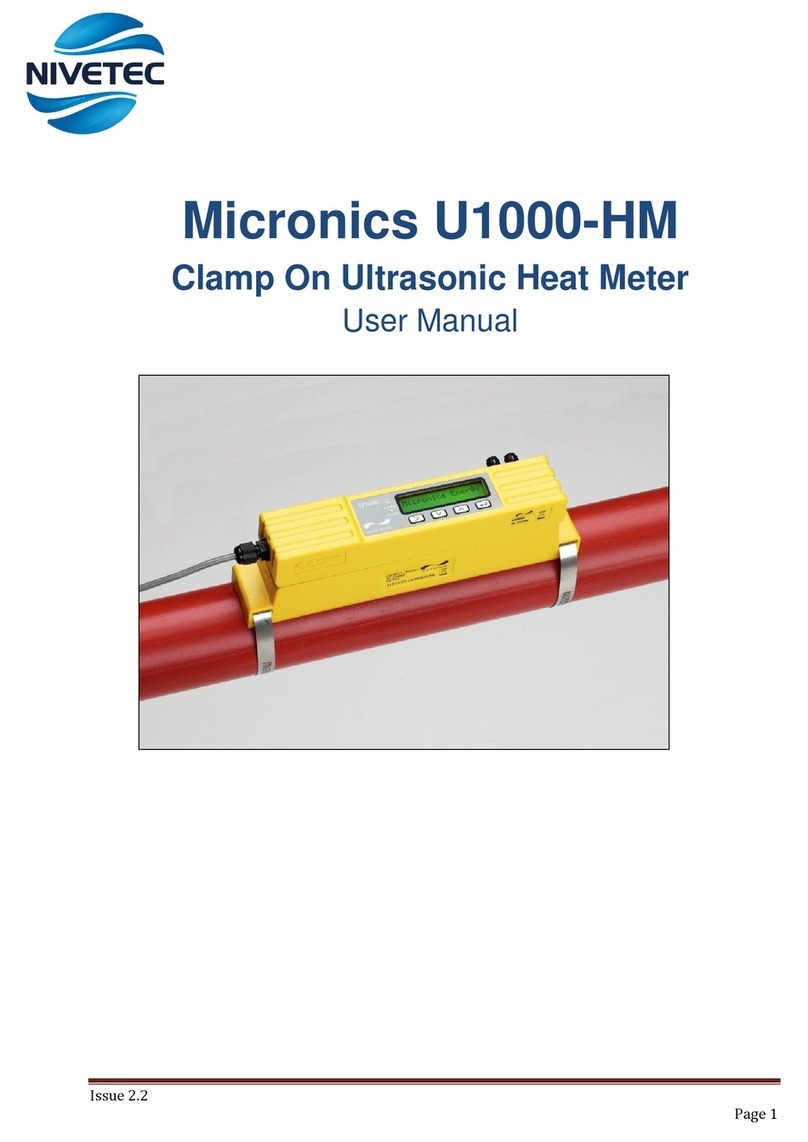
Nivetec
Nivetec Micronics U1000-HM user manual
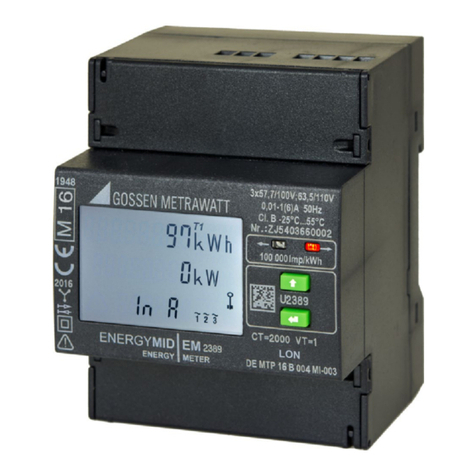
Gossen MetraWatt
Gossen MetraWatt LonWorks ENERGYMID U228 W1 Series Interface description
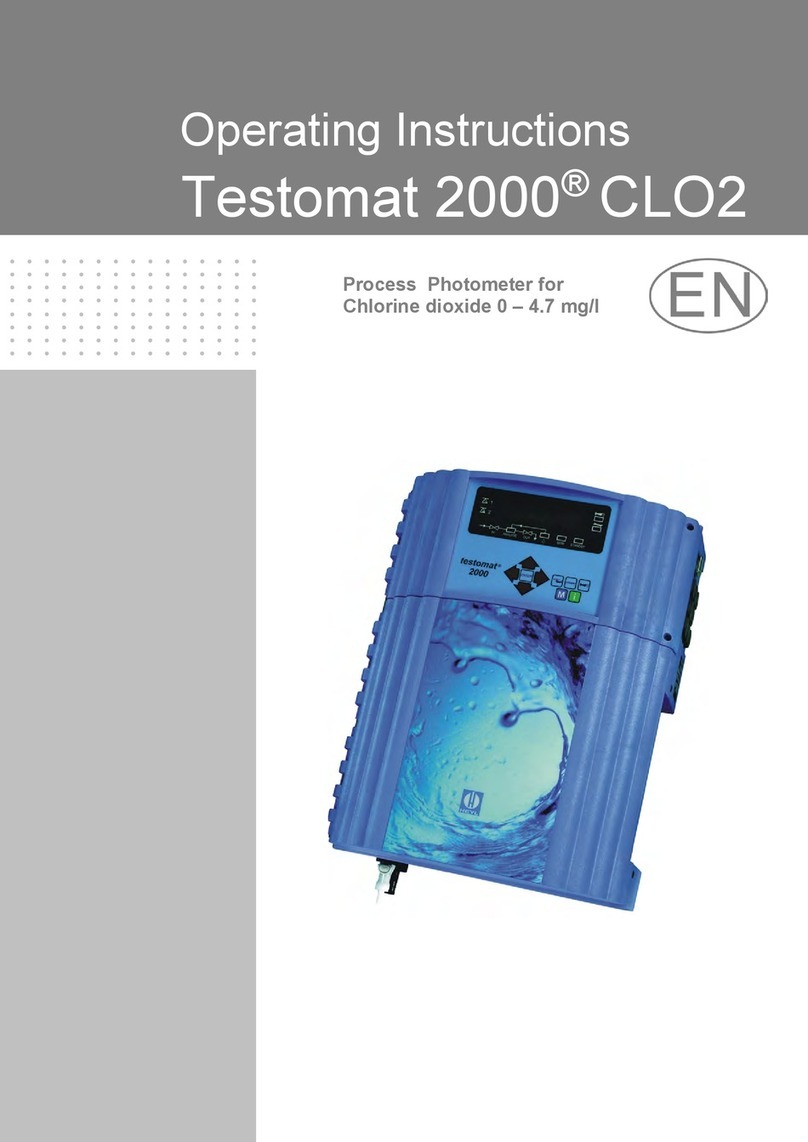
Testomat
Testomat 2000 CLO2 operating instructions

biochrom
biochrom Novaspec III Plus manual

Milwaukee
Milwaukee MW802 user manual
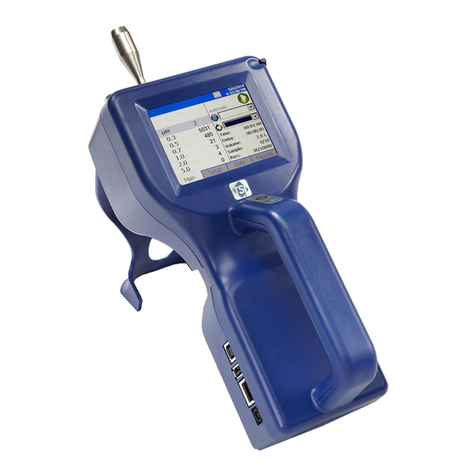
TSI Incorporated
TSI Incorporated aerotrak 9306-V2 Operation manual

